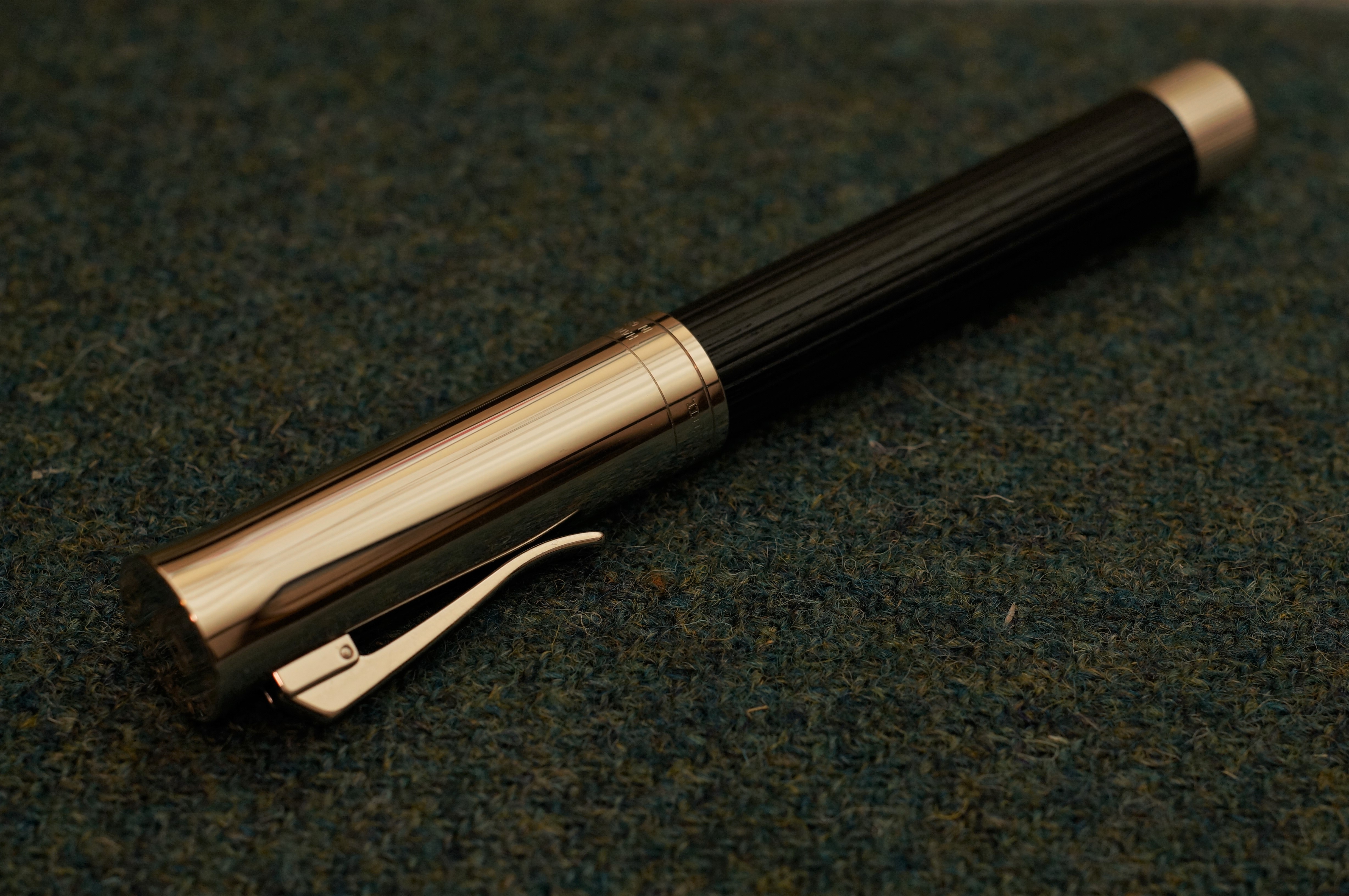
Look at the way that platinum shines.
Attentive readers will remember that at the London Writing Equipment Show I was bitten by the Graf bug. I handled an Intuition — but not just any Intuition, an Intuition Platino. And not just any Platino, a Platino wood.
Yes, these distinctions matter, because only the wooden editions (ebony, grenadilla, pernambuco) sport the largest bodies and, most importantly, the largest nibs (eg compare against the non-wood Platino).
In the weeks that followed I’ve tried very hard to forget the Platino, or to convince myself that one of its smaller brethren would scratch my itch.
Who was I kidding?
An ebony-wood version with a broad nib arrived earlier this week, in a beautiful wooden presentation box.
Now, there’s a lot to say about this pen — especially since it’s not widely known and I don’t want to skip anything — so let me put a few subheads in place and start at the beginning.
Design
In a world of resin pens with cigar shapes, finials, cap bands, sections and threads, this pen looks like nothing else.
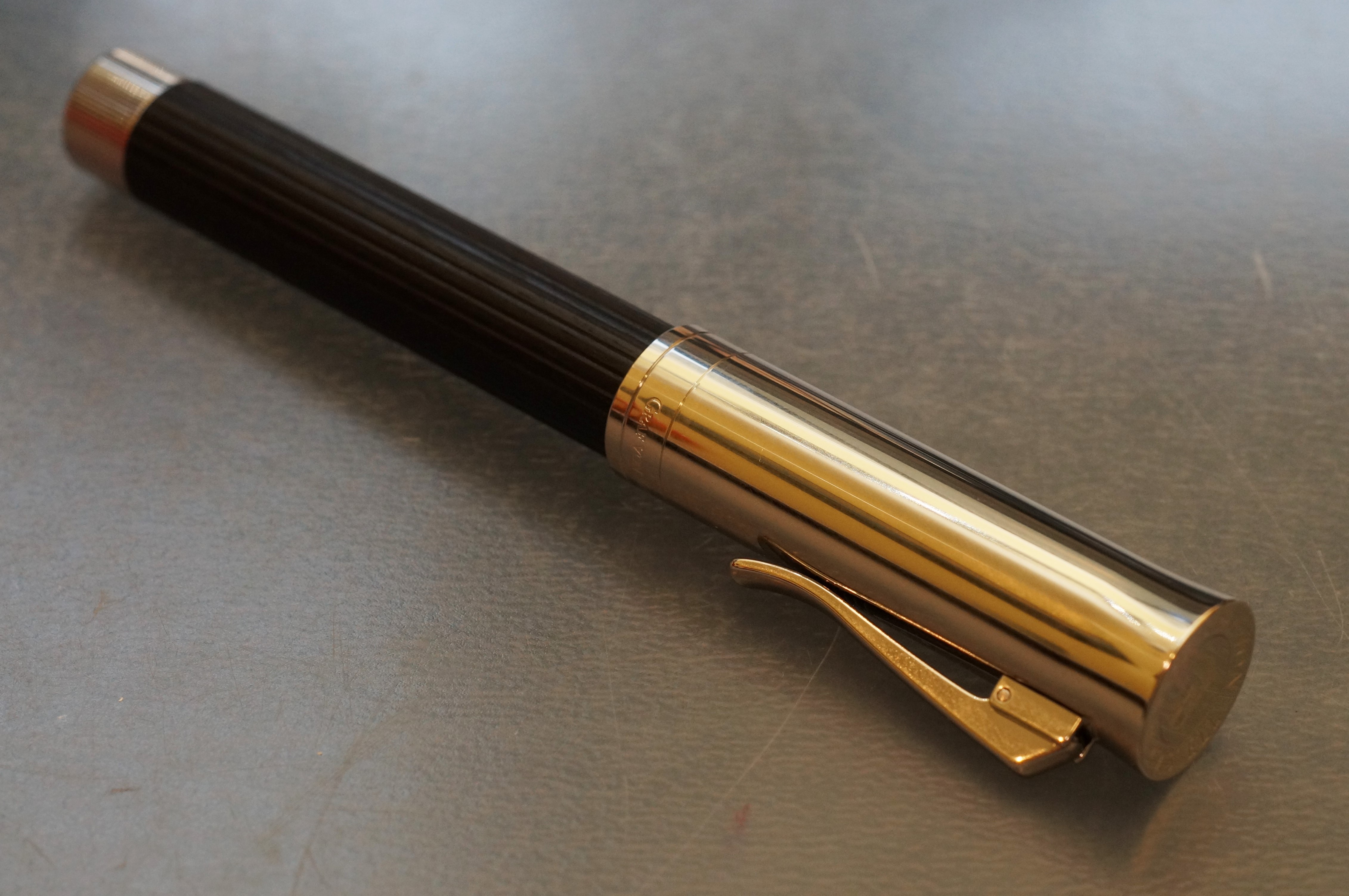
I love the way this pen looks. A great balance of straight lines and curves.
There’s the whopping trumpeted platinum-plated cap with the trademark sprung clip and the Graf shield beautifully engraved on the concave end. It shines.
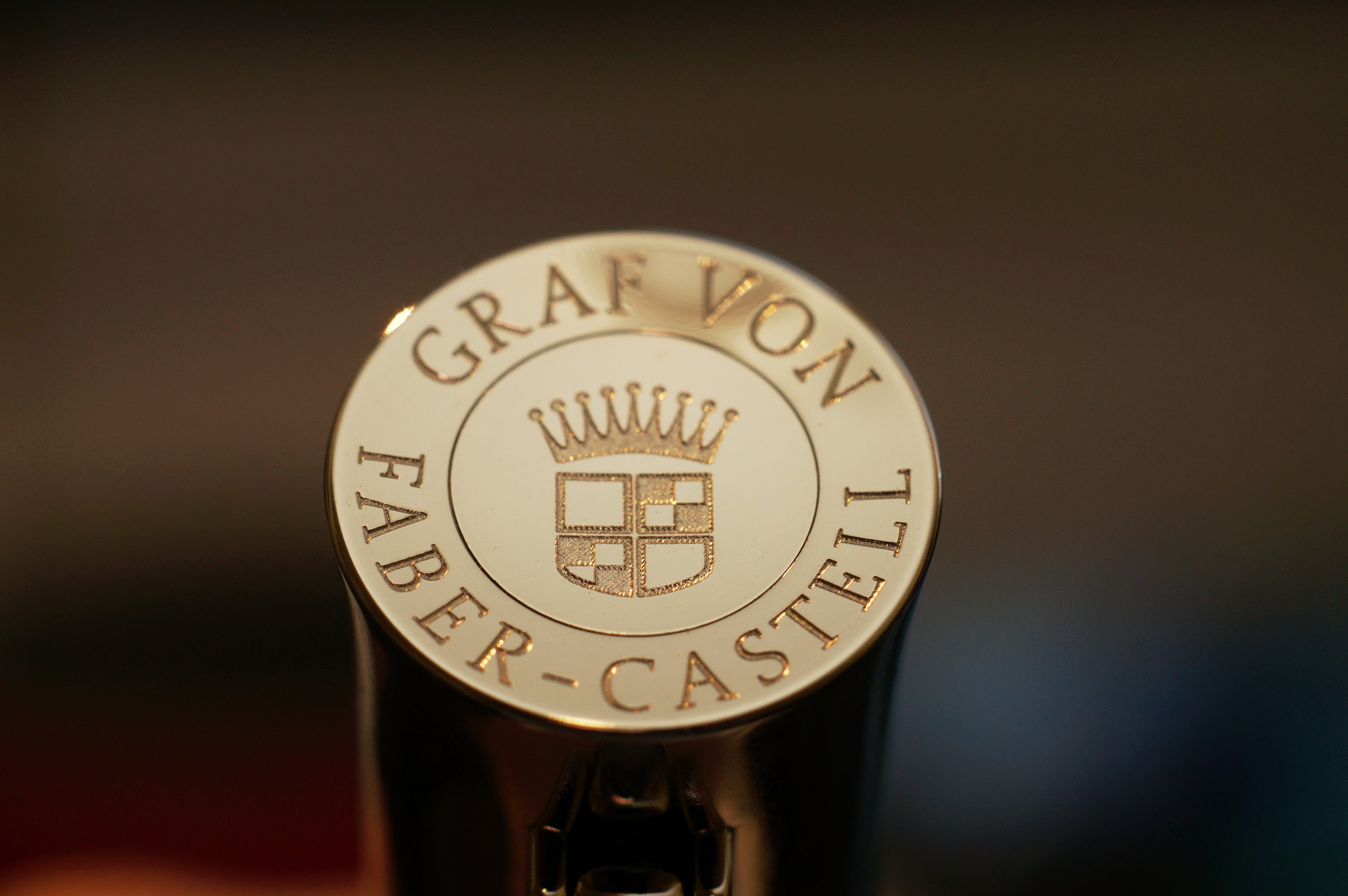
The cap needs to be this big just to fit the brand name on.
Under that cap the fluted ebony barrel runs from end to end, uninterrupted. And at the pointy end, a large, 18k dual-tone nib again emblazoned with shield and, unusually, no breather hole. The grade, B, is faintly stamped near the base.
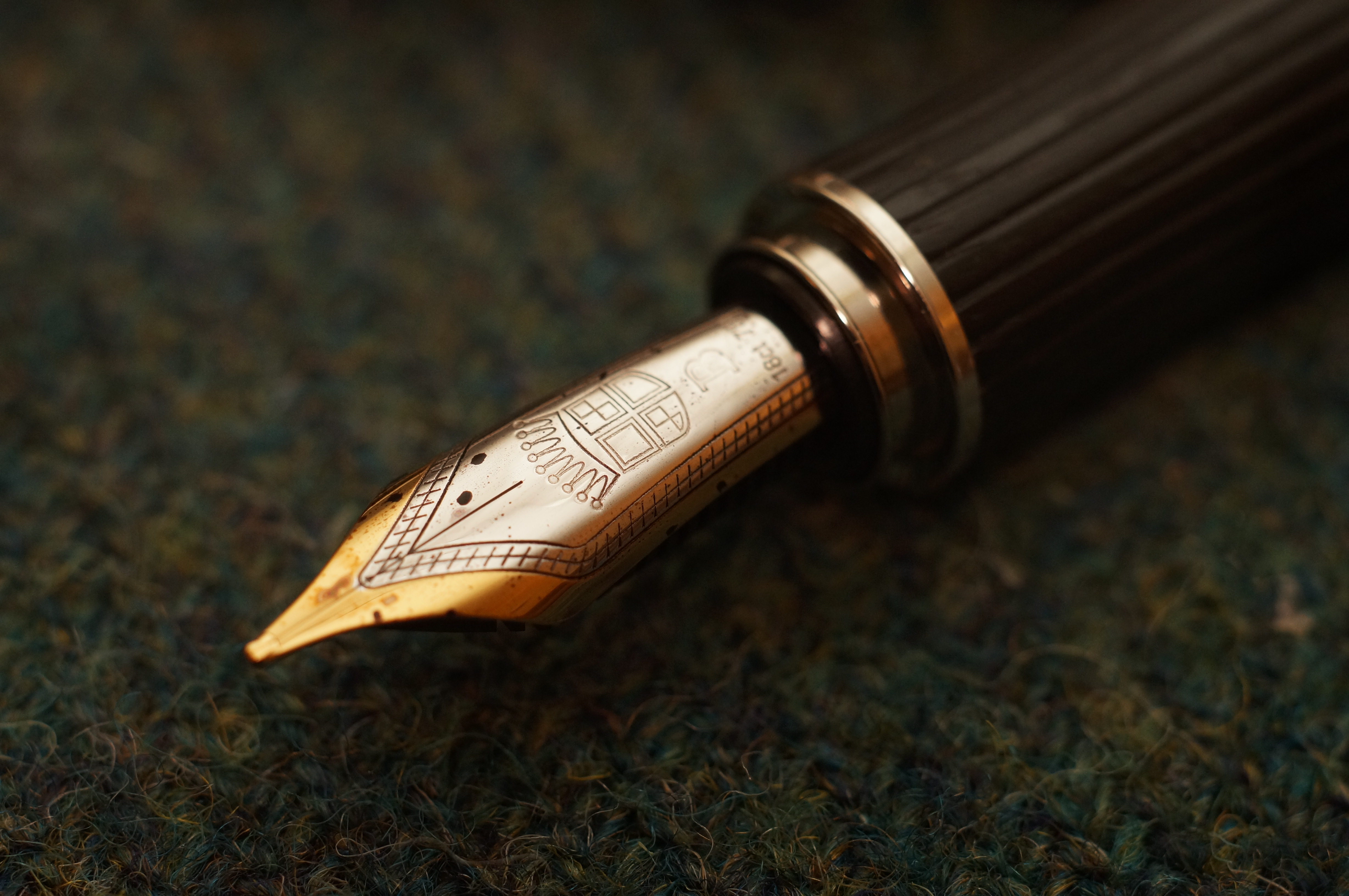
Without a breather hole, the nib looks rather unusual.
The Intuition Platino is a seriously handsome pen. It’s actually smaller than you might expect, but it has bags of presence. The contrast of organic fluted wood against bright metal, the squat proportions and square ends against the curves of the cap and clip — it’s clear that every detail has been agonised over.
Comfort
Pick it up and you notice the weight first of all. 51 grams all told, or 33 with the cap removed. It’s dense. The glossy, cold cap contrasts against the warm, textured wood.
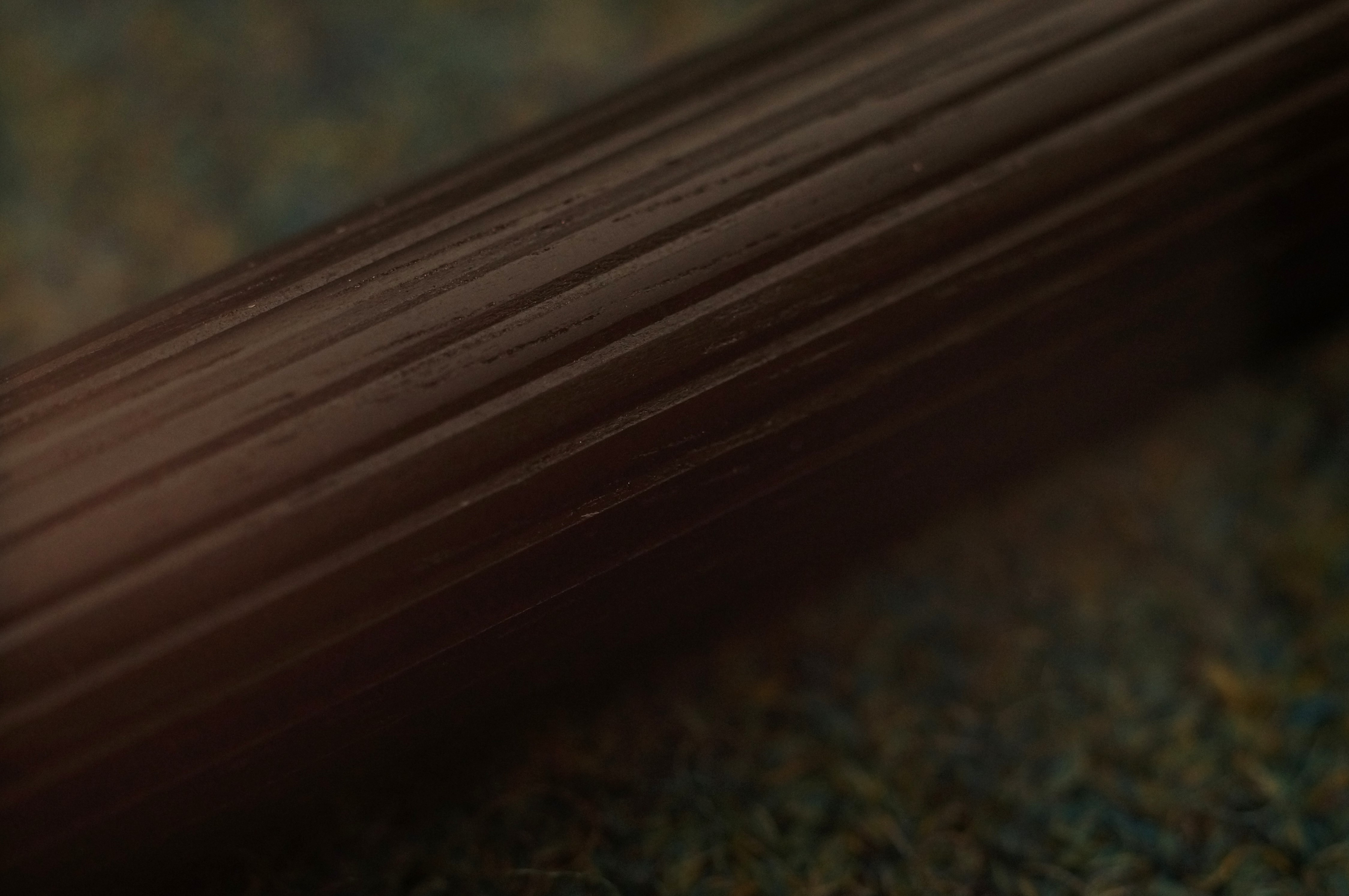
The ebony is smooth yet grippy. It’s so tactile.
Take the cap off and you see the wide barrel runs all the way down to the nib, great if you like fat pens. And then your fingertips notice that the “section” part of the barrel is subtly concave, giving a natural rest for the fingers without forcing a particular grip.
I find that the Platino rests very comfortably in my hand, and because of the textured wood there’s no worry about your grip slipping during long writing sessions, even if you’re prone to a sweaty hand. With no section threads or step to worry about, there’s nothing to distract you from writing.
This is the main reason why I couldn’t consider another Graf model: they tend to be slim, often with metal sections, too.
Practicality
As a daily user the Intuition Platino has a lot going for it.
The cap is a slip-on, which closes with a definite click. A little wiggle, but it feels very secure.
The fancy sprung clip has grips engraved on its underside and a decent spring tension, so if you’re the kind of person who clips pens to pockets you’ll be pleasantly surprised. Of course, there’s a sizeable weight and a big ol’ cap sticking out, too, so maybe take care anyway. I’m going to keep mine in a case.
When I first picked up the Intuition I assumed the knob on the top was a piston filler mechanism.
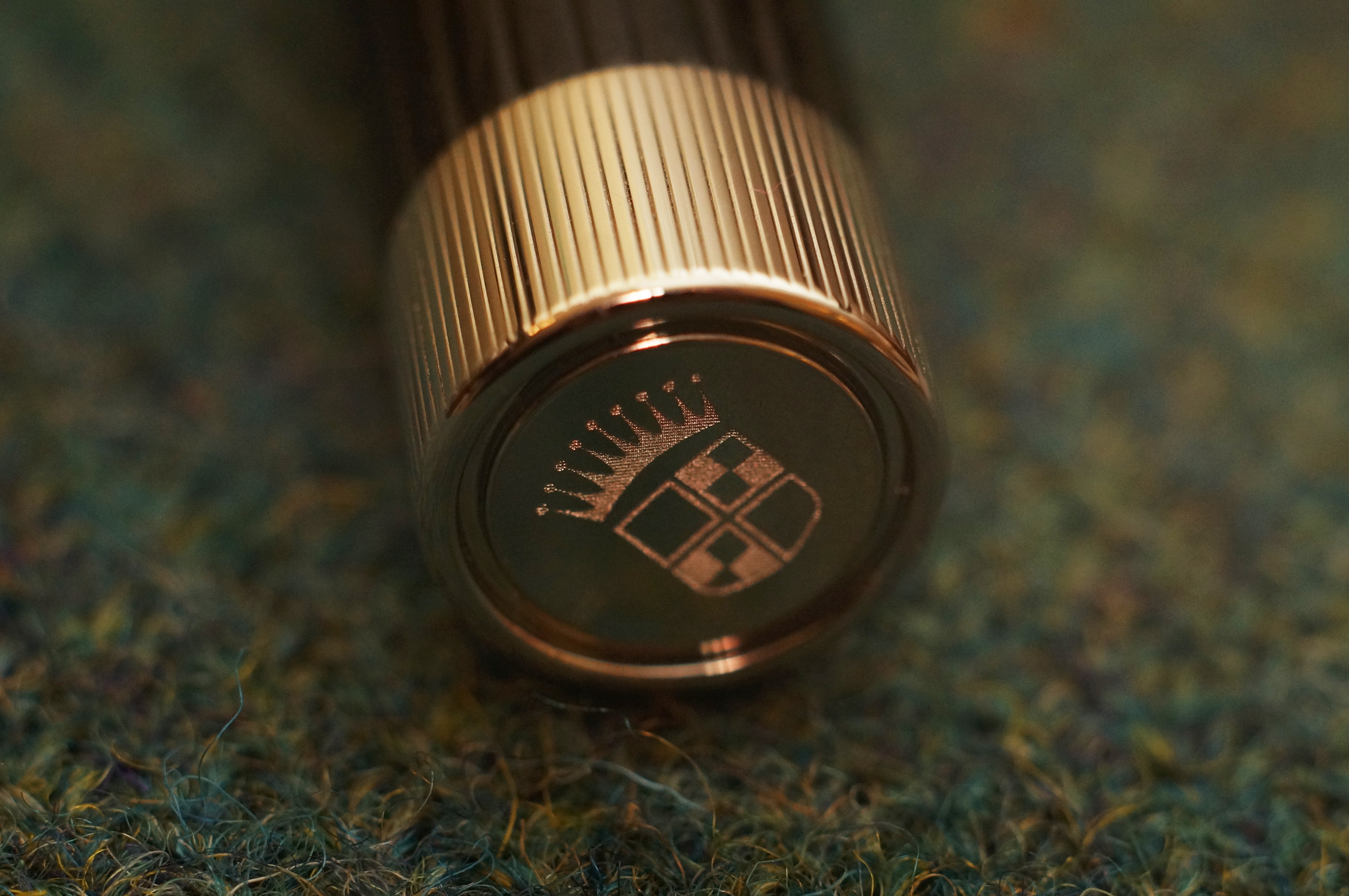
This shield appears in three places. Maybe they were feeling… defensive? (Geddit?!)
It’s not. Winding the knob pushes the whole nib section out of the pen, revealing a converter within. A little thought explains why Graf went for this system; you hardly want to be dipping a wooden pen into an ink bottle, do you? Instead, remove the nib unit with converter, fill it, wipe it off, and reinsert into the barrel. No worries about staining.
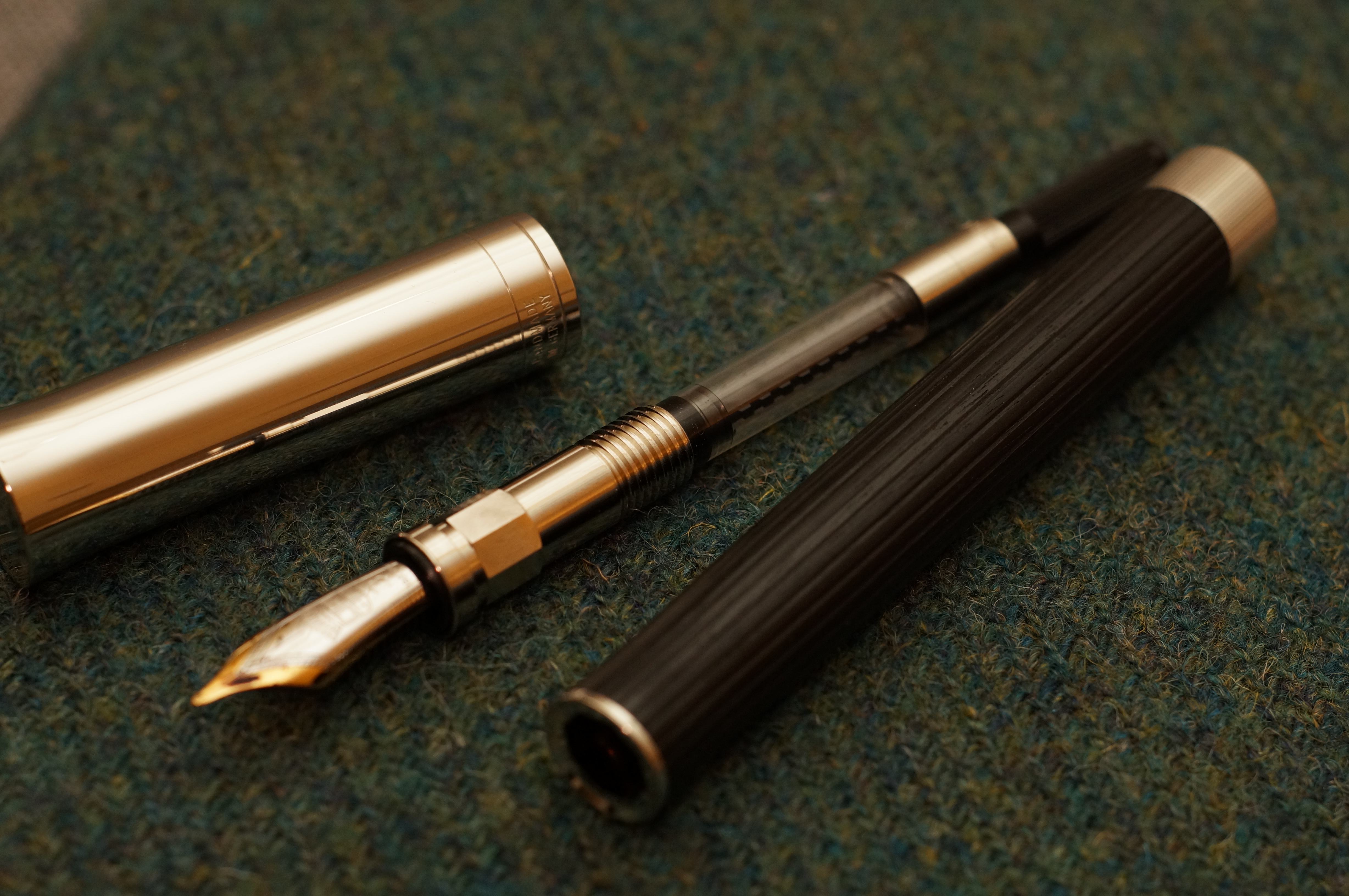
Beneath the ebony lies… dun dun DUNNN: a converter?!?
The whole system feels very smooth and takes hardly any time at all. I’ve dropped out the converter a couple of times already just to check ink levels. Most importantly, when the knob is snugged up, there’s no play or rattling in the pen at all, and you’d never know there was such a mechanism inside.
Sure, it’s a little disappointing to find that the heart of such a prestigious pen is a perfectly normal plastic converter. Part of me wishes they’d found a way to engineer a snorkel system like Sheaffer, or some other crazy solution. Certainly the converter has a smaller capacity than the large piston fillers from Pelikan or Montblanc.
Perhaps the biggest impracticality — at least for those who like things just so — is the fondness of the cap for picking up fingerprints.
Writing experience
Within seconds of touching the Platino’s broad 18k nib to paper I was grinning.
As you might expect from a nib that’s supposedly run in by hand at the factory, it’s well set up, perfectly aligned.
It’s not a gusher, but it’s wet enough to show inks off without making for impractical drying times. There’s a bit of audible and tactile feedback when writing so you don’t get that feeling of imprecision you get with overpolished nibs. But the nib is smooth and doesn’t hesitate when you’re writing fast. No hard starts or skipping, no finicky sweet spot. And there’s even some softness (not quite flex) under pressure, which enhances flow and line width and makes for a pleasing bounce on the page.
The only issue I’ve found is that the flow varies a little during extended writing. After about half a page it runs a little drier; advancing the converter or letting the pen rest for a while seems to allow the feed to recover and the line will be heavier again for a while. It’s not problematic, but it does suggest that the feed or the converter might be at its limit.
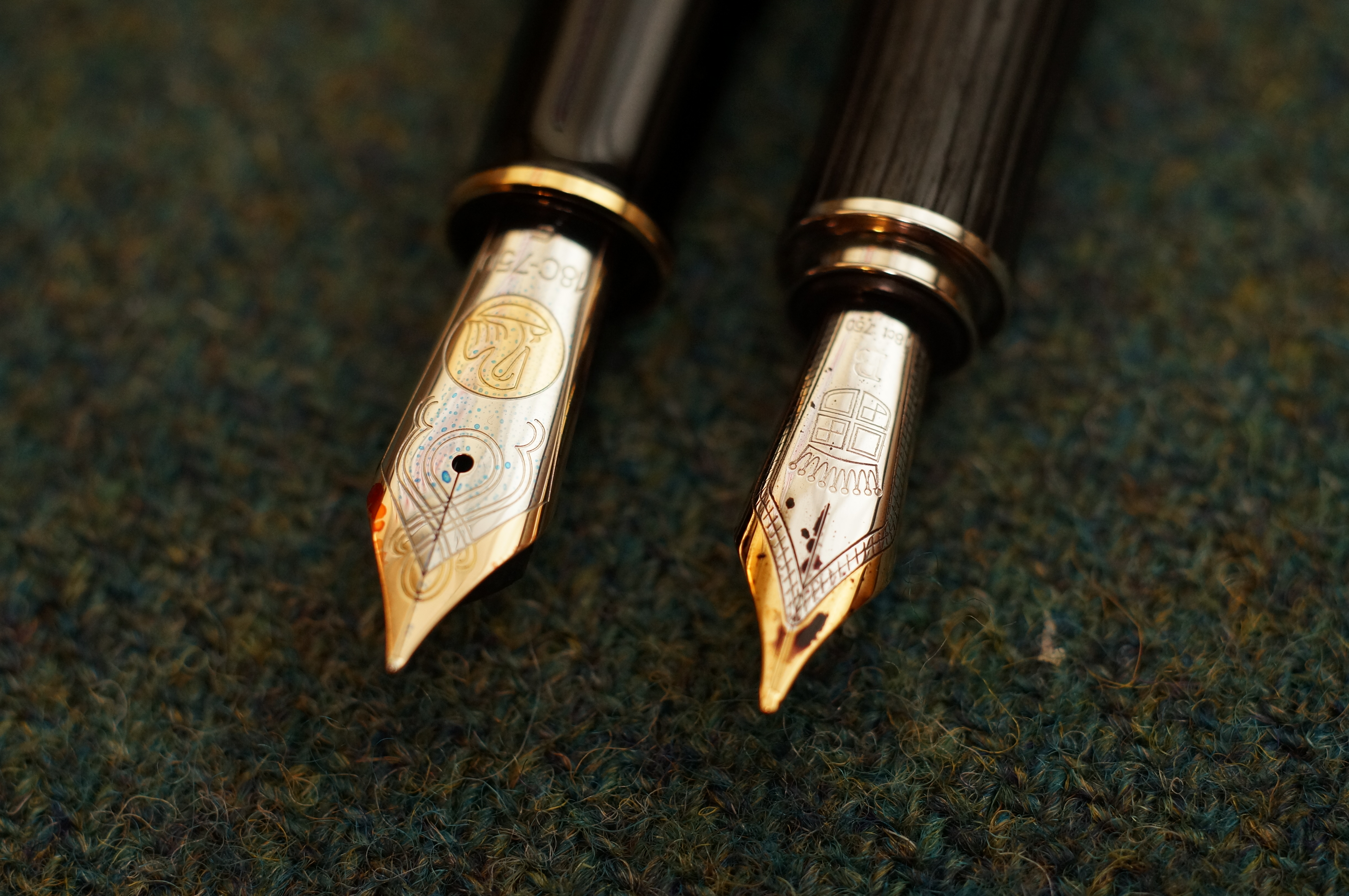
Basically any nib looks tiny next to the M1000.
Value
This is not a cheap pen, by any stretch of the imagination. List price at UK retailers is £695, putting the Graf about 50% more expensive than the Pelikan M1000, and about the same price as the Montblanc 149.
What do you get for that? Well, for a start you get a pen that’s not just “Made in Germany”, but “Handmade in Germany”. Graf claims hundreds of manual steps are involved. That may matter to you or not; to me, it’s a “nice to have”.
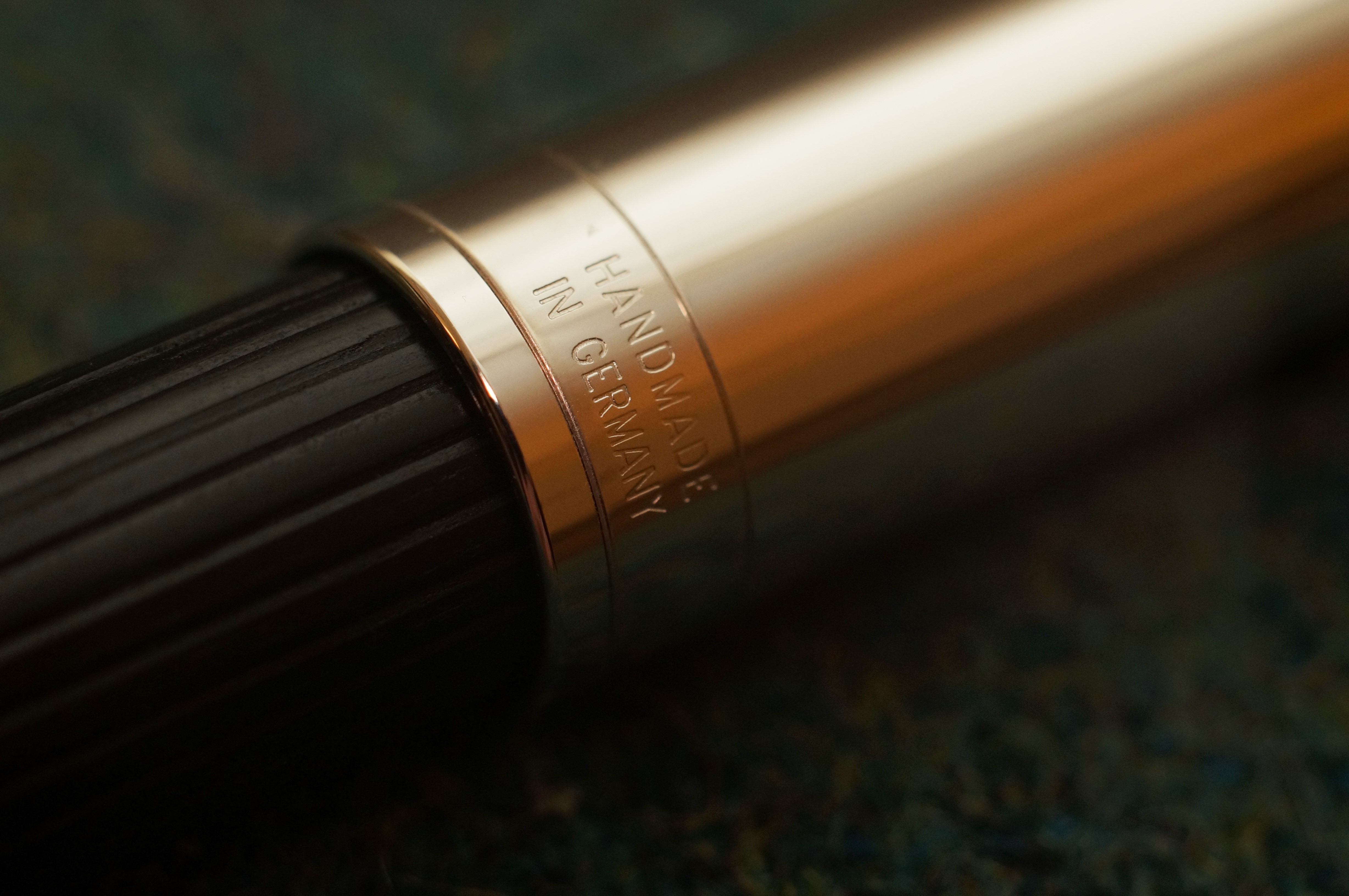
Those Germans sure have steady hands.
What definitely does matter is that the entire pen is utterly flawlessly finished: the engraving is perfect, the polishing is perfect, the wood is perfect, fit and finish is perfect, right down to internal threads. The nib is perfect out of the box.
And speaking of the box: it’s a plush varnished hinged wooden thing, worthy of keeping on the desk and with room for three pens.
Of course, nobody buys a pen for the box. I personally think the truly unique materials and design make the Platino a cut above the rest, but then again I paid nowhere near the list price…
Conclusion and alternatives
I practically dreamed about the Platino for about 10 weeks, and devoured every one of the few reviews and forum posts about it. Put it another way: when that UPS box landed in my hands, my expectations were sky high.
Amazingly, I got through my first week with the Intuition without any buyer’s remorse. For me, it ticks all the boxes:
- Cohesive, distinctive design
- Wide, comfortable section
- Large nib
And on top of all of those, the Graf simply exudes thoughtfulness, care and quality. I pick it up and it just feels right.
Of course, if you want a big German flagship pen, you’re spoiled for choice. I’ve said many times that I love my Pelikans, both M1000 and M800-series. And the M1000 is quite a bit bigger than the Intuition.
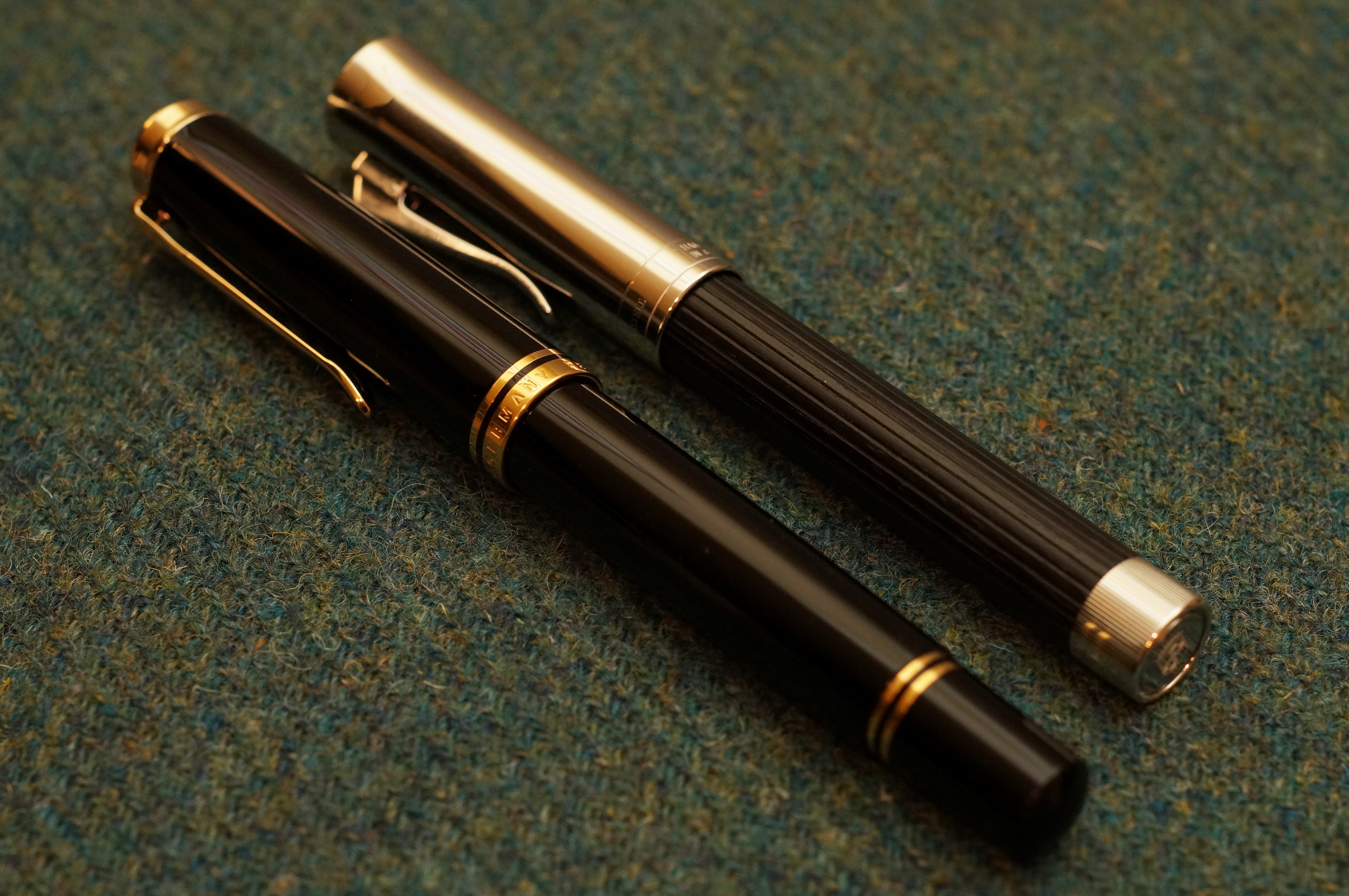
The M1000 is noticeably bigger — but at 25g body only, it’s about a third lighter than the Graf.
At the end of the day, I live by the pen forum advice: when in doubt, buy both!
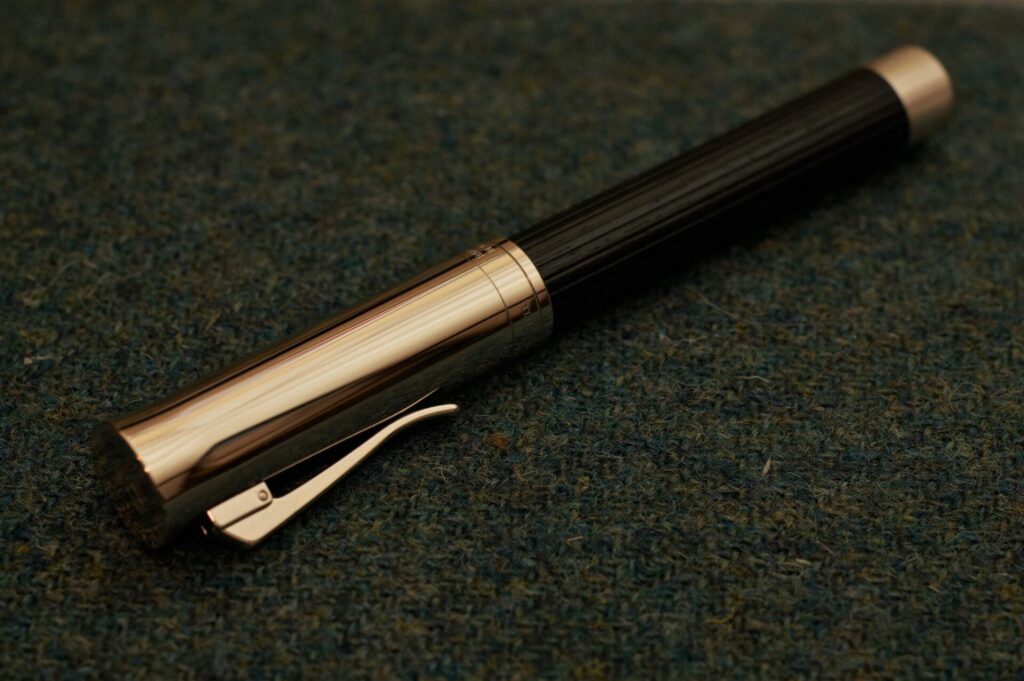
Great review. I had not seen one of these before. What a beauty! 😊
Glad I could spread the word! 🙂
That is such a handsome pen I’m not surprised you succumbed. Great review of it, though not quite making me add to my wish list, though quite a few of your reviews have done. 🙂
I promise you I’m not a shill for “Big Pen” 😛
I have two GvFC Intuitions regular size. They are beautiful and a strikingly different design to the standard Pelikan/Mont Blanc/Sailor to end pens. Don’t know about the Platino but the nibs on my pens are not soft which makes them suitable for every day use.
Thanks for this great post !!
Thank you for this informative review–it was part of the reason I ended up purchasing one recently. As you describe, the pen just feels ‘right’, especially after using it for a couple weeks. Extremely impressed. The clip is the best I’ve ever used–satisfyingly sprung and very effective–and the feeling of gripping wood while writing is very very special. The fine nib I ordered is the best I’ve used on a modern pen–juicy but capable of elegant shading, perfect amount of feedback (not overpolished!), and maybe a tiny bit of ‘bounce’. Unfortunately I have also had your experience of it running dry with extended writing, although it has not consistently been a problem with my example.